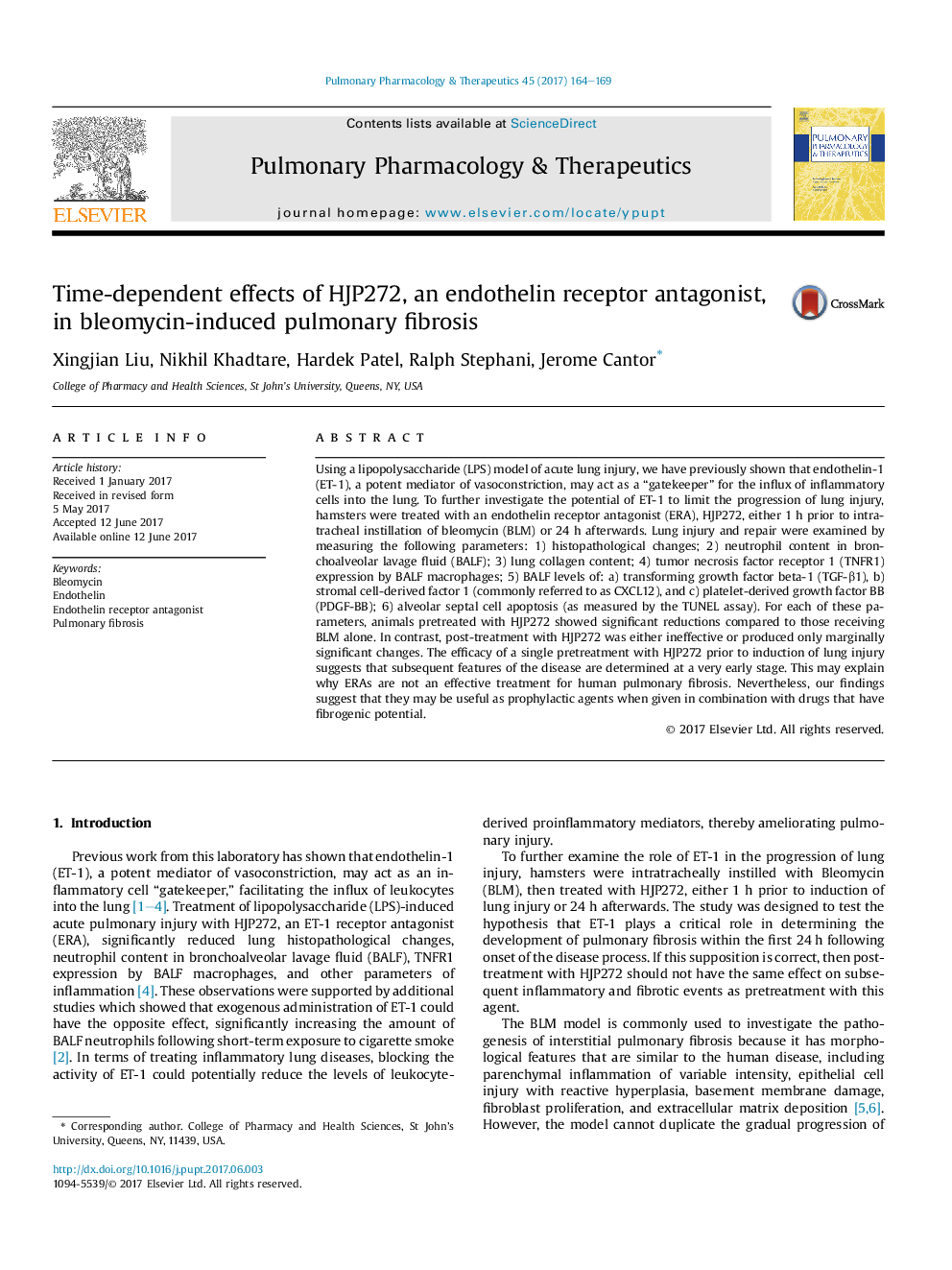| Article ID | Journal | Published Year | Pages | File Type |
|---|---|---|---|---|
| 5558155 | Pulmonary Pharmacology & Therapeutics | 2017 | 6 Pages |
Using a lipopolysaccharide (LPS) model of acute lung injury, we have previously shown that endothelin-1 (ET-1), a potent mediator of vasoconstriction, may act as a “gatekeeper” for the influx of inflammatory cells into the lung. To further investigate the potential of ET-1 to limit the progression of lung injury, hamsters were treated with an endothelin receptor antagonist (ERA), HJP272, either 1 h prior to intratracheal instillation of bleomycin (BLM) or 24 h afterwards. Lung injury and repair were examined by measuring the following parameters: 1) histopathological changes; 2) neutrophil content in bronchoalveolar lavage fluid (BALF); 3) lung collagen content; 4) tumor necrosis factor receptor 1 (TNFR1) expression by BALF macrophages; 5) BALF levels of: a) transforming growth factor beta-1 (TGF-β1), b) stromal cell-derived factor 1 (commonly referred to as CXCL12), and c) platelet-derived growth factor BB (PDGF-BB); 6) alveolar septal cell apoptosis (as measured by the TUNEL assay). For each of these parameters, animals pretreated with HJP272 showed significant reductions compared to those receiving BLM alone. In contrast, post-treatment with HJP272 was either ineffective or produced only marginally significant changes. The efficacy of a single pretreatment with HJP272 prior to induction of lung injury suggests that subsequent features of the disease are determined at a very early stage. This may explain why ERAs are not an effective treatment for human pulmonary fibrosis. Nevertheless, our findings suggest that they may be useful as prophylactic agents when given in combination with drugs that have fibrogenic potential.
